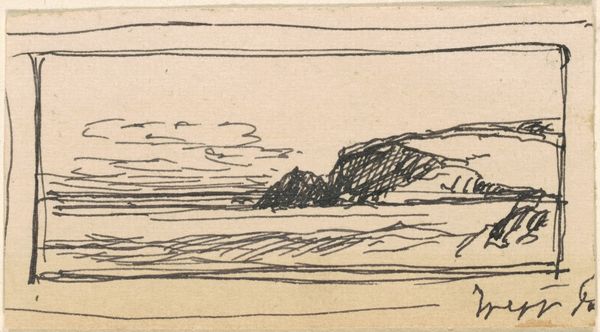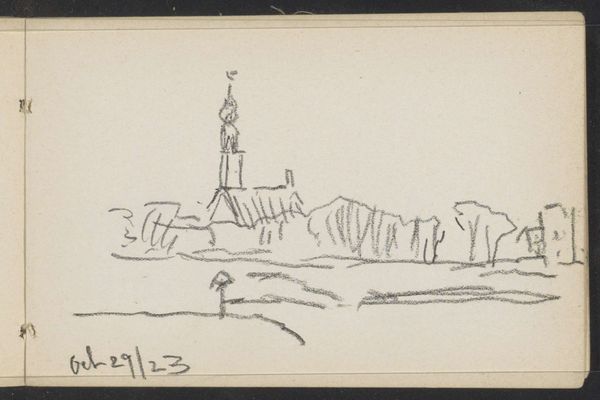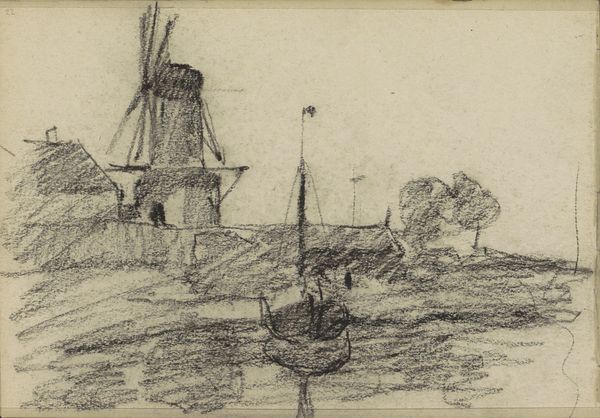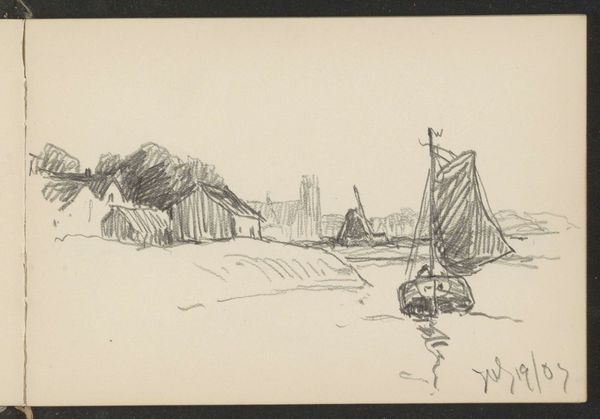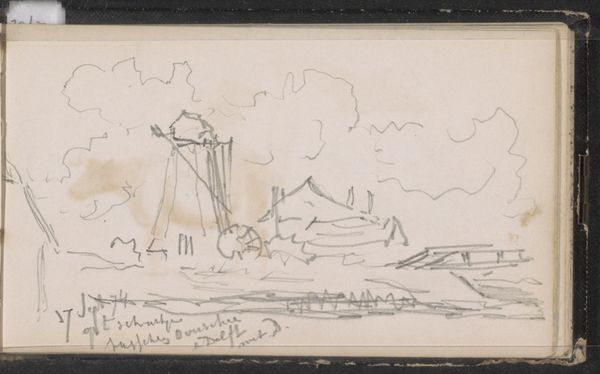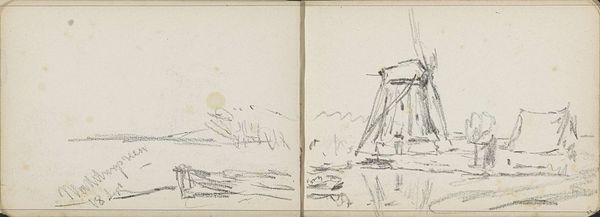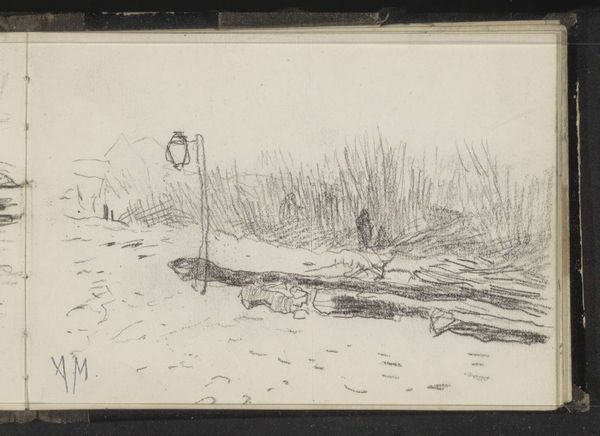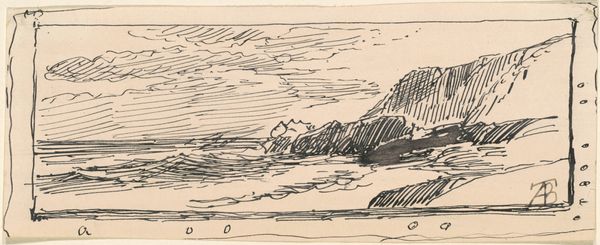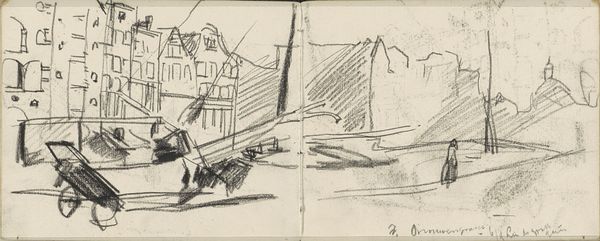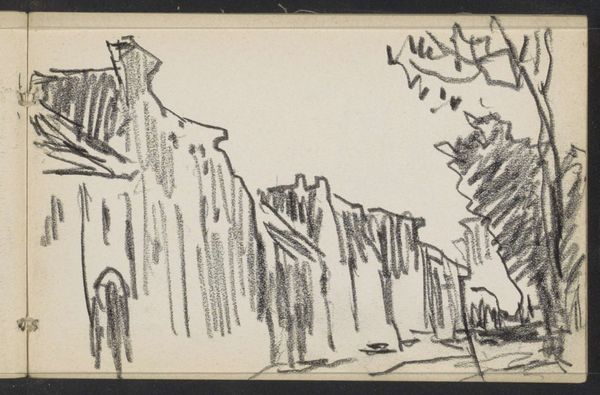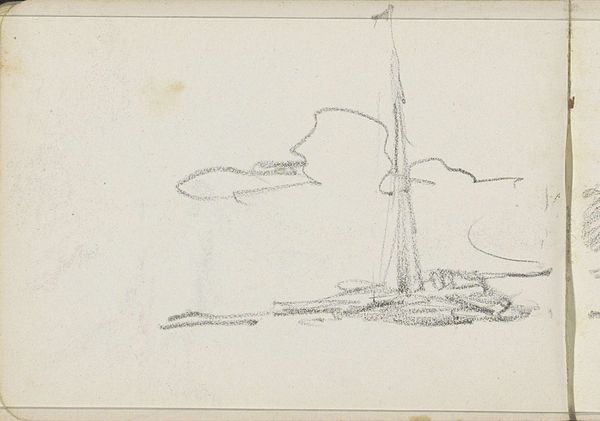
drawing, pencil
#
drawing
#
landscape
#
geometric
#
pencil
#
cityscape
#
realism
Copyright: Rijks Museum: Open Domain
Editor: This is Alexander Shilling's "Schellemolen te Damme," created in 1923 with pencil. The drawing feels like a memory, sketched quickly. What visual language speaks to you most powerfully in this work? Curator: For me, the windmill acts as a visual metaphor, doesn't it? Historically, windmills represent industry and progress, yet here it stands somewhat isolated, evoking a sense of a bygone era. What do you make of its stark silhouette against the open sky? Editor: I think its imposing outline anchors the image, adding depth to the tranquil rural scenery. The style makes me consider memories of such monuments. Does this particular portrayal of the windmill evoke any specific symbolism rooted in the region’s cultural memory? Curator: Absolutely. Windmills in the Netherlands and Belgium aren’t just functional structures; they are emblems of Dutch perseverance, resourcefulness, and the battle against the sea. This Schellemolen perhaps references cultural continuity in the face of modernization or change. The very act of sketching it emphasizes preservation. Editor: That gives it a lot more depth. The pencil lines aren’t just depicting a scene; they’re connecting to a larger cultural narrative. Curator: Precisely. And how do the birds in the sky function within this composition? Editor: Maybe they emphasize freedom and continuity as well, like nature in a somewhat organized rural place. Curator: Yes. Consider how the birds against the skyline become hieroglyphs themselves, echoing themes of persistence in the image. Shilling turns an everyday landscape into an enduring tableau of human endeavor and endurance, rendered with such simple marks. Editor: I hadn't considered all the levels of meaning. Thank you!
Comments
No comments
Be the first to comment and join the conversation on the ultimate creative platform.
